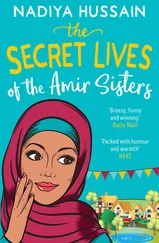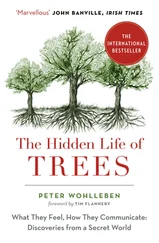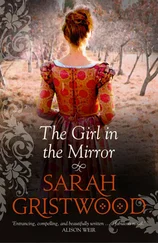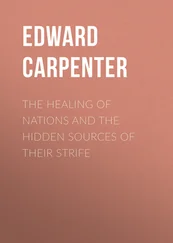Henry had had his palaces refurbished for his bride – the queen’s apartments must have fallen out of use in his minority. Marguerite employed a large household and paid them handsomely, exploiting all the financial opportunities open to a queen to enable her to do so. Regulations for a queen’s household drawn up in the year of her arrival listed sixty-six positions, including a countess as senior lady with her own staff, a chamberlain, three chaplains, three carvers, a secretary, a personal gardener, pages of the beds and of the bakery, two launderers and various squires. Less than ten years later, the council had to suggest that the size of the queen’s household should be cut down to 120. She had, however, brought no relations and few French attendants with her, something which had been a problem with previous consorts. But what at first looked like a blessing meant that she would attach herself to new English advisers, ardently and unwisely.
On the journey from France Marguerite had learned to trust her escort Suffolk – the pre-eminent noble whom the Burgundian chronicler Georges Chastellain called England’s ‘second king’. She never saw any reason to change her mind – or to hide her feelings. Suffolk for his part, perhaps from a mixture of genuine admiration and intelligent politics, flattered and encouraged the young queen, even writing courtly verses playing on her name, the marguerite or daisy:
For wit thee well, it is a paradise
To see this flower when it begins to spread
With colours fresh enewed, white and red.
Although by the standards of courtly love poetry these phrases were mere convention, there were inevitably those who suspected something more than a platonic relationship between the girl in her teens and the man in his late forties – and suggested that a betrayal of England’s king might be allied to betrayal of England as a country. More than a century later, the idea of a romantic liaison between Marguerite and Suffolk was still sufficiently alive that Shakespeare has Suffolk, on their first meeting in France, falling for her beauty before he learns her identity. But even Shakespeare’s Suffolk mixes self-interest with sexual attraction, hoping to rule the king through Marguerite – and in reality, the queen had become close not only to the duke but also to his wife (born Alice Chaucer, granddaughter of the poet), which surely argues against an affair.
Suffolk had not been the only noble adviser to approve the French marriage. It had also had the endorsement of Cardinal Beaufort, the king’s great-uncle and one of the men who had governed the country during his minority, who shared Suffolk’s personal regard for Marguerite. In addition she enjoyed the support of the cardinal’s Beaufort relatives (the Somerset line that were Margaret Beaufort’s family). But against the marriage had been the king’s uncle Humfrey, Duke of Gloucester; and though Gloucester was now ageing and increasingly marginalised, his was in many ways the voice of the Francophobe English people.
All too soon, within weeks of Marguerite’s arrival and coronation, the matter of England’s ceding Maine and Anjou came to a head. It was said that Henry had promised to give back the territories ‘at the request of his wife’, as one angry reporter, Dr Thomas Gascoigne, put it: ‘… that aforesaid queen of ours begged the King of England that [the lands] so be given to her father at the urging of William de la Pole, duke of Suffolk, and his wife who earlier had promised to request it.’ And Gascoigne’s voice was but one among many.
In a sense he was right. In a letter to her uncle the king of France in late 1445 Marguerite promised: ‘And as to the deliverance which you desire to have of the Comté of Maine, and other matters contained in your said letters, we understand that my said lord has written to you at considerable length about this: and yet herein we will do for your pleasure the best that we can do …’ A letter of Henry’s own volunteers to give up territory in Maine, at least partly because of ‘our dear and well-beloved companion the queen, who has requested us to do this many times’. Reconciliation, and encouragement to implement the peace process, was what a queen was supposed to work at. Even the pageants had said so.
Popular blame for the loss of these lands fell largely on the head of Suffolk, the official negotiator of the marriage deal; but the situation did nothing for Marguerite’s popularity. Neither did the enmity of the old Duke of Gloucester. As Polydore Vergil wrote: ‘This woman, when she perceived the king her husband to do nothing of his own head but to rule wholly by the Duke of Gloucester’s advice … determined to take upon herself that charge and, little by little, deprive the duke of that great authority which he had lest she also might be reported to have little wit who would suffer her husband, now of mature years, to be under another man’s government …’ And Christine de Pizan had urged that a wife’s task should always be to preserve ‘the honour of her husband’. But it seems also likely that Marguerite had no conception of faction as an avoidable evil, or of the idea that the monarchy in England was supposed to be above such disputes. In the French court faction was the modus operandi, and it was normal for the crown to align itself with one or another party. The difficult relationship between England and France underpinned the first years of Marguerite of Anjou’s queenship. But it also dominated the lives of the women from the English families on either side of the political divide.
TWO
The Red Rose and the White
The red rose and the white are on his face,
The fatal colours of our striving houses
Henry VI Part 3, 2.5
Contemporary commentators never spoke of the ‘Wars of the Roses’. 6The name itself is a much later invention, variously credited to the historian David Hume in the eighteenth century and the novelist Sir Walter Scott in the nineteenth. The idea of the two roses was in currency not long after the event, and the white rose was indeed a popular symbol for the house of York, one party in the conflict, but the red rose was never widely identified with their opponents, the house of Lancaster, until the moment when Henry VII, poised to take over the country in 1485, sought an appropriate and appealing symbol – soon merged, in the first days of his kingship and after his marriage to Elizabeth of York, into the red and white unifying ‘Tudor rose’.
In some ways, moreover, the attractive iconography of the two roses does history a disservice, implying a neat, two-party, York/Lancaster divide. In reality the in-fighting which tore the ruling class of England apart for more than three decades was never just a dispute between two families, as clearly separate as the Montagues and the Capulets. The ‘Wars of the Roses’ are more accurately called the ‘Cousins’ War’, since all the protagonists were bound together by an infinite number of ties. And these conflicts should really be seen in terms of politics – secret alliances, queasy coalitions, public spin and private qualms. It was a world in which positions were constantly shifted and alliances changed from day to day.
In 1445, the last undisputed king of England had died almost seventy years before. He had been the powerful and prolific Edward III, latest in the long line of Plantagenet kings who had ruled England since the Norman Conquest. But in 1377 Edward was succeeded by his grandson (the son of his dead eldest son), the ten-year-old Richard II. Richard was deposed in 1399 by his cousin, Shakespeare’s Bolingbroke, who became Henry IV and was succeeded by his son Henry V, who in turn was succeeded by his son Henry VI. So by 1445 this Lancastrian line had successfully held the throne for almost half a century.
Читать дальше












